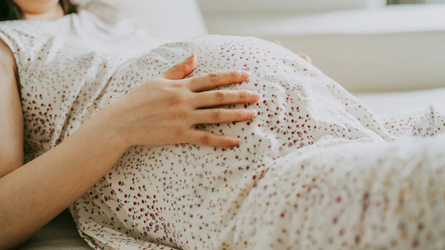
There were 55 births for every 1,000 women of reproductive age in 2023, CDC data shows, fewer than any other year on record.
Daniel Lee/Moment RF/Getty Images
Women in the United States are having babies less often, and the fertility rate reached a record low in 2023, according to data from the US Centers for Disease Control and Prevention.
The US fertility rate has been trending down for decades, with particularly steep dips after the Great Recession of 2008. An uptick in 2021 spurred theories about a Covid-19 “baby bump,” but the birth rate has quickly returned to its more consistent downward pattern.
In 2023, the US fertility rate fell another 3% from the year before, to a historic low of about 55 births for every 1,000 females ages 15 to 44, according to final data published Tuesday by the CDC’s National Center for Health Statistics. Just under 3.6 million babies were born last year, about 68,000 fewer than the year before.
Since 2007, when the fertility rate was at its most recent high, the number of births has declined 17%, and the general fertility rate has declined 21%, according to the new report.
There’s not one particular reason why fertility rates are on the decline in the US, said Sarah Hayford, director of the Institute for Population Research at The Ohio State University. A number of social and economic factors are probably coming into play, she said.
A “package of demographic changes” – people getting married later and less often, spending more years in school and taking longer to get economically established in a steady job, to name a few – align with birth rate trends, said Hayford, who was not involved in the new report.
“People are waiting to have children. And on average, when people wait longer to have children, they end up having fewer children,” she said. “I think there’s also greater social acceptance of not having children or having a smaller family. So as that has become more acceptable, people are more carefully weighing their decision to become parents.”
The CDC data shows that births have continued to shift to older mothers; the birth rate was highest among women ages 30 to 34, with about 95 births for every 1,000 women in this group in 2023.
The data also shows that the teen birth rate dropped to a record low in 2023, with about 13 births for every 1,000 girls ages 15 to 19.
Longstanding trends aside, women in the US have also been facing a massive upheaval of reproductive care in the years since the US Supreme Court’s Dobbs decision overturned Roe v. Wade and revoked the federal right to an abortion.
National-level data may obscure some effects that state abortion bans have had on local birth trends. But an analysis from last year suggests that states with abortion bans had an average fertility rate that was 2.3% higher than states where abortion was not restricted in the first half of 2023, leading to about 32,000 more births than expected.
“The relationship between abortion rights and birth rates is complicated. We’re still seeing the recent trends in abortion policy play out in terms of demographic impact,” Hayford said. “But it turns out abortion access changes people’s plans for having children.”
People’s broader experiences with reproductive health can also shape these decisions, she said.
And the new CDC report shows a worrying trend.
Most pregnant women – about three-quarters – did receive prenatal care starting in their first trimester last year. But the share of women who receive care later – or not at all – has been ticking up in recent years. About 2.3% of pregnant women had no prenatal care in 2023, up 5% from the year before. Nearly 5% of women had prenatal care in only their third trimester, according to the new report.
Article Link
Archive